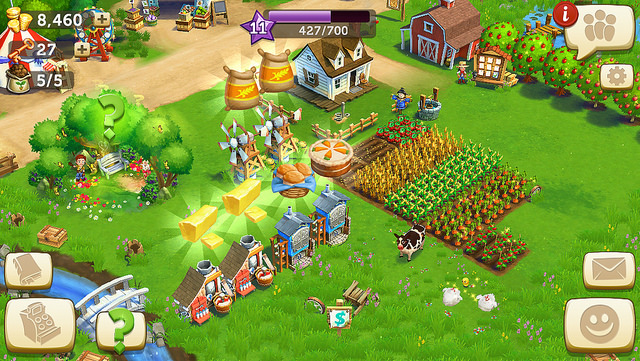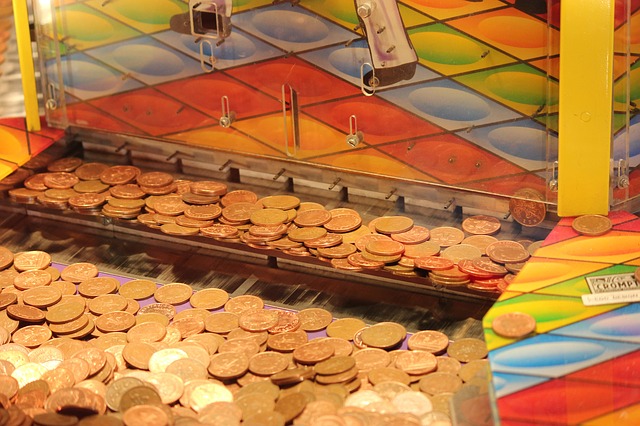In my previous post, I talked about the important role of challenge as an element for gameful design. Today I will talk about rewards, a game element that is present in many gameful applications. But before you continue, if you did not read part 1 yet, please take some time to review it because I will readdress the importance of challenge that I mentioned there.
Part 1: Challenge Accepted! The role of challenge for gameful design
Let’s then recall that in part 1 I reviewed Bernard Suits’s definition of a game: “playing a game is a voluntary attempt to overcome unnecessary obstacles” (from The Grasshopper), and the four necessary elements for game playing:
- prelusory goals: the state of affairs that players aim to achieve;
- lusory means: the means by which the players are allowed to pursue the goals;
- constitutive rules: that prohibit the use of more efficient in favour of less efficient means;
- lusory attitude: the players accept the rules just because they make game play possible.
Where do rewards fit in this definition? Well, they don’t! Although it is common to offer a reward to the winner of a game, rewards are not a necessary condition for gameplay. Suits argues that while rewards can be offered without preventing gameplay, they do not need to exist to allow gameplay to occur. Therefore, rewards are actually external to gameplay and any game can still be played even if rewards are removed. Think about the examples I provided in part 1: people can still play golf and determine the winner, even if they will not receive any reward for winning; people can also still play a race game and determine the winner, even if they will not receive any prize for winning.

The motivational effect of rewards
Rewards are not needed for game playing, nevertheless, they are often used as a means to increase player motivation. And they usually work for the intended goal, but it is important to know that rewards are an extrinsic motivation, i.e., they motivate individuals to do something because they are pursuing something external, not just because they enjoy the activity by itself. Regarding motivation, rewards work in an opposite way to challenges in games. Challenges foster the player’s intrinsic motivation, i.e., they make an individual play because they enjoy the activity itself, without need for any external reward. As explained by Ryan, Rigby, and Przybylski, intrinsic motivation is supported because players feel competent when they overcome the game’s challenges and autonomous when they can choose which challenges to tackle or how to face them.
Although both kinds of motivation work and can be combined to produce improved results, many studies have shown that extrinsic motivation can undermine intrinsic motivation. Therefore, if rewards are offered to someone that was intrinsically motivated to do something, they might as a result lose part of this intrinsic motivation and begin to enjoy the activity less. This means that such player will not be as motivated to play the same game if a reward is not available anymore, after having received a reward for playing it on a previous opportunity. Daniel Pink does a great review of these studies and the relationship between intrinsic and extrinsic rewards in the book Drive: The Surprising Truth About What Motivates Us. Perhaps one extreme example of this effect in game playing is that of professional players. Professional players are always playing for a reward (their salary). This can make their intrinsic motivation to play the game decrease and even disappear. In this case, they will be playing a game, but they will only feel they are working, therefore the intrinsic enjoyment of game playing can be lost.
I have argued, backed by Suits, that rewards are external to game playing. However, many game mechanics are often said to be reward mechanics, and this is not always true. For example, let’s look at the role of points and badges for gameplay. In their essence, points and badges are feedback mechanics, not reward mechanics. (They can also be part of progression, which I will address in the next post, but for now let’s consider their role as feedback mechanics.) Receiving points or badges lets the player know they have just overcome a challenge, thus fostering their intrinsic motivation. Rewards can be externally attached to points and badges, i.e., the player can be offered a reward in exchange for points or after having received specific badges. But doing so does not turn points and badges into reward mechanics. They are still feedback mechanics because the rewards are external to gameplay. The game could still be played even if the rewards were not available. In addition, adding these external rewards shifts player motivation to extrinsic motivation, potentially decreasing the player’s intrinsic motivation. If that happens, the player’s feeling of competence for overcoming the game’s challenge might be decreased, as the feeling of receiving a reward increases. This can lead players to perceive points and badges as rewards mechanics, even though they are still just feedback mechanics, although with attached external rewards.
Many modern digital games ground their design on behavioural economics models of reward schedules, in particular mobile casual games. They rely on having the player carry out a series of repetitive actions without barely any real challenge, then waiting to receive the rewards. Most mobile farm games are an example: they make players click the game map to plant their crops or order the fabrication or products, then need to come back after a specific amount of time has passed to collect the results and order the next actions. This kind of mechanics can be motivating for some time, or even addictive, and that is why so many game designers employ them. However, they appeal to extrinsic motivation, to motivation related to rewards. Without clear challenges, these games fail to foster the gameful experience, the positive feeling associated with game playing. This is why many players seem to play them a lot, but cannot really explain what it is that they like in the game, and after some time the extrinsic motivation runs out and the game appeal disappears by the lack of intrinsic motivation.

FarmVille 2 (photo by Tamahikari Tammas – CC BY-NC 2.0)
What does this mean for Gameful Design?
As in modern games, many gameful designers ground their work on reward schedules, fostering extrinsic motivation by making the user feel rewarded by carrying out the desired actions on the system, sometimes very repetitive actions. And as in games, that kind of motivation can work, but probably for a short period of time, as with time users will get tired of the same rewards and will only keep repeating the activities if the reward increases. In addition, this reward model can undermine any intrinsic motivation that users previously had to interact with the application in the first place.
So, can rewards be included in gameful design? I would say yes, but scarcely and with extreme care. They can be used as an additional extrinsic motivator, or as a short term motivator. It is better to give them as a surprise incentive that the user was not expecting, since research has shown that these kind of rewards have less chance of undermining intrinsic motivations than expected rewards. But they should probably not be used as the main mechanics behind a gameful application. Long term engagement will only be achieved if the design fosters intrinsic motivation, and this cannot be accomplished with rewards. Rewards can keep users engaged for some time, but ultimately they cannot afford a gameful experience. This can only be afforded by mechanics grounded on overcoming unnecessary challenges, as defined by Suits, and inspired by intrinsic motivators like competence, autonomy, and relatedness.
What is the role of rewards for gameful design? If you are aiming for a long term engagement, I would say it should be a secondary role. My advice is to focus on challenges and intrinsic motivation as the ground for your gameful design. Then add rewards, if you must, with care and just to provide an additional bit of short term motivation at specific points of your design. If the design aims for a short term engagement, rewards can play a more important role, but be aware of the adverse effect they might have on the user’s intrinsic motivation.

Part 3: Level Up! The role of progression for gameful design




2 Comments